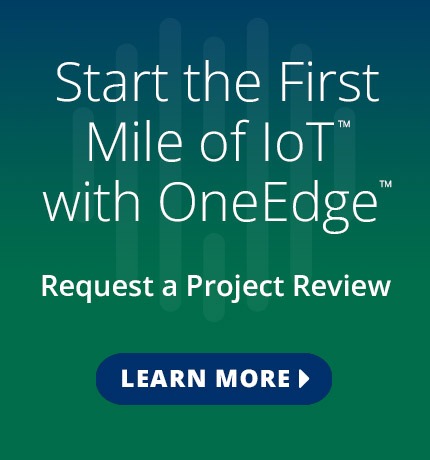
While device management is important in the Internet of Things (IoT) conversation, data management is also crucial. Given IoT’s rapid proliferation worldwide, the volume of data available for collection and analysis has risen exponentially.
A critical success factor for any solution is its ability to collect, rationalize and make data available from heterogeneous devices. For example, clearing the path for data to travel from device to platform to third-party software pays off with greater efficiency and better insights.
The challenge is that not all IoT devices organize and communicate the data they are gathering in the same way. Moreover, not all IoT platforms are engineered to understand or accommodate all data formats. So how do we navigate these challenges and achieve optimal data management?
Streamline IoT Data Organization and Transmission

Organizing data on the device is the first hurdle. Using software applications, IoT leaders can set devices to organize data in structured ways.
OMA SpecWorks (formerly known as the Open Mobile Alliance) developed device management and communication protocols for machine-to-machine (M2M) or IoT called Lightweight M2M (LwM2M). LwM2M provides the ability to define data constructs (called “objects”) and set parameters for object-associated data collection and storage.
Users can include thresholds and attributes that trigger data reporting when configuring an object. For example, they may only need to hear from the device when it detects an alarming situation, such as when the temperature rises above a predefined level.
LwM2M users also have access to the Object Registry, a collection of reusable resources for developers. If another developer has created a data model for the device and the information they want to collect, you can use it instead of creating one.
Data transmission and interoperability are simplified when data is organized on the device using a set of standardized parameters and a protocol interface. The information is pre-cleansed and ready to feed into various tools for analysis.
Using LwM2M to Integrate with Third-Party Software, Including Microsoft Azure

Today’s best IoT solutions bring all data related to device management or applications through a primary channel to the platform level. At that point, developers might want to send the data to a third-party app.
OneEdge™, powered by Telit Cinterion, offers the flexibility to:
- Use LwM2M as the main channel for all tasks
- Open a secondary channel to link data directly to a third-party service, such as Amazon AWS or Microsoft Azure
To do so, developers define a model of their application data and take those data directly into the third-party IoT hub.
Gain Efficient and Scalable IoT Deployments
The LwM2M protocol can offer dramatic efficiency gains for your IoT deployment at scale. MachNation tested LwM2M’s efficiency against MQTT using a typical IoT device running both protocols. The results showed that LwM2M was:
- 72% more efficient than MQTT at delivering data during the initial connection
- 88% more efficient during observation reporting
- 31% more efficient when the device is monitoring behavior without actively reporting observations
Utilizing LwM2M, OneEdge helps you gain the dexterity you need to collect, manage and analyze data from your IoT devices. Efficient IoT data management — from the edge to the cloud — is a significant factor in the success of any IoT deployment.
OneEdge is a secure software stack that empowers you to democratize the First Mile of IoT. You can connect and manage your IoT solutions at the edge. OneEdge’s deployment and management tools enable you to leap into the 5G world.
Speak with our IoT experts to learn more about what OneEdge can do for your IoT deployment.
Request a Project Review
Editor’s Note: This blog was originally published on 17 September 2020 and has since been updated.
